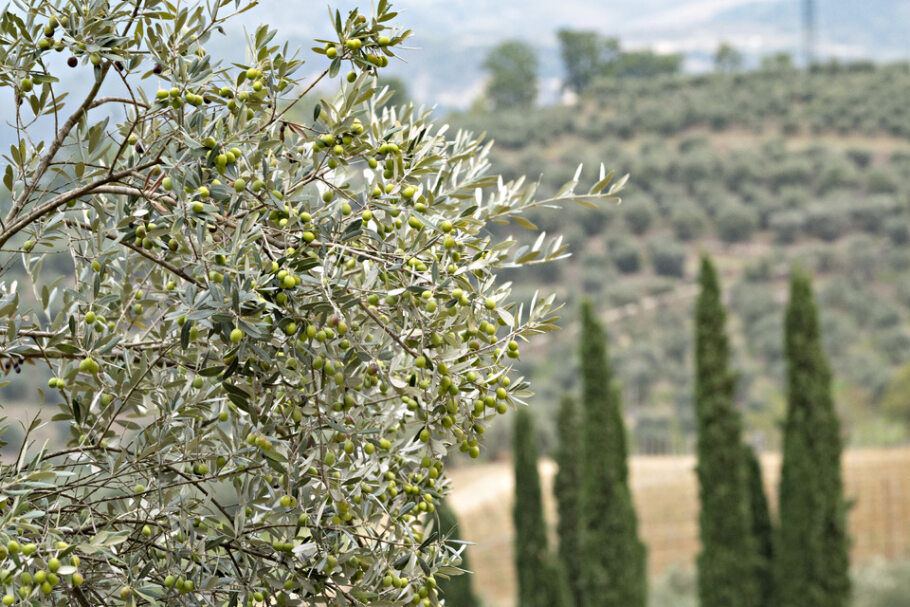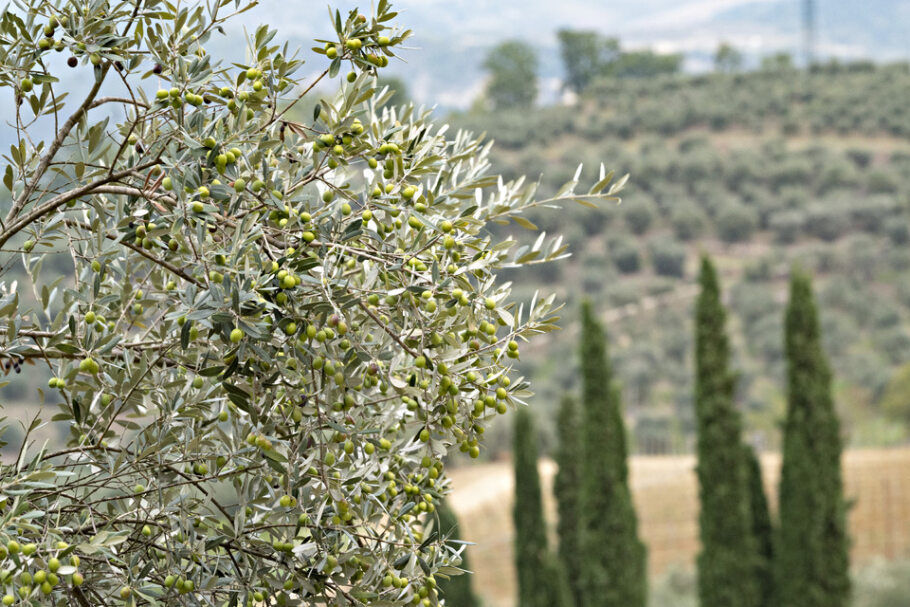
For high-quality olive oil, it is crucial to carefully choose the harvest time. One of the main indicators is the change in color of the olives, which occurs during the ripening process called veraison. Knowing all the secrets of the olive's life cycle is extremely important because the choice of harvest time determines the organoleptic and nutritional properties of our precious oil.
What is veraison?
The term "veraison," even though it may seem complex, actually refers to nothing more than the ripening phase of the fruit, during which there is a gradual change in color and consistency, an increase in sugars, and various chemical modifications of the pulp. The noun "veraison" is related to "ripening,". Veraison, in the context of olive veraison, means "to become violet or dark."
In the production of olive oil, this entirely natural process marks the ripening of the olives. Depending on the intended use, the harvesting of olives can occur at different ripening stages. It is, therefore, a truly important decision to be carefully considered after a thorough examination of the state of the olives.
Veraison stages
During olive veraison, important changes, both physical and chemical, occur gradually. The entire process is determined by the amount of chlorophyll present: when the olive is green, it means it is rich in chlorophyll, but as it ripens, this gives way to anthocyanins, imparting a dark color to the fruit. Ripening first affects the skin, also called the epidermis, and then progresses to the inner part of the fruit, the pulp.
The transition from green to purplish follows these stages:
-
Stage A: The skin color is intense green (ripening has not yet begun).
-
Stage B: The skin starts to change color and becomes yellow-green (20% ripening).
-
Stage C: Less than half of the olive's surface changes color, turning red, purple, or black; the pulp is all white or green (40% ripening).
-
Stage D: The skin's color is mostly purple or black; the pulp also begins to change color (50%-60% ripening).
-
Stage E: Olives are black or purple; the pulp is almost fully ripe (80% ripening).
-
Stage F: Olives are entirely purple or black, with the pulp fully purple (100% ripening).
For the production of high-quality oil, the ideal time for harvesting is during stage E, which is when the olive is not overly ripe. In Laudemio, this can range from mid-October to late November. To make this choice, we consider several factors: the taste, the texture, and the amount of oil we want to obtain.

Veraison influencing factors
The harvest period is quite variable because, in reality, the veraison of olives can be determined by several factors. Below, you will find an illustrative table containing the main ones with a brief explanation.
|
Climate |
Excessively low temperatures can delay or interrupt the ripening process, while excessively high temperatures can cause overly rapid ripening, compromising the quality of the fruit. |
|
Geographical location |
Generally, olive veraison occurs from mid-October and can last until December, but in some regions like Sicily, it can start as early as the end of September and continue northward. |
|
Sun-light exposure |
The olive tree is a heliophilous plant: it loves the sun, and therefore, its fruits cannot ripen properly without substantial direct light. |
|
Soil |
Facing south and not exceeding an altitude of 800 meters; dry without humidity, preferably sloped to prevent water stagnation; even better if enriched with organic matter; ideal pH: 5-8.5. |
Veraison importance
So far, we have seen what veraison is, how it can be divided into stages, and what factors determine the proper maturation of olives. But why is it so important?
During the natural ripening process, concurrent with the changes in the color of the olives, fundamental chemical changes also occur that influence the nutritional and organoleptic properties of the final product. To ensure high-quality olive oil, it is essential to carefully determine the best time for harvesting, when there is low acidity and a higher phenolic content (polyphenols have strong antioxidant and anti-inflammatory properties).
In addition to the nutritional profile, ripening also affects the taste and aroma. Extra virgin olive oil should taste fresh on our taste buds and remind us of fruit, as it ultimately derives from it. Furthermore, it should have a spicy kick and a slight throat tickle. The aroma should evoke freshly cut grass, an apple, or a tomato, and it should be appropriately bitter.
It goes without saying that inadequate veraison, and therefore an improper choice of the olive harvesting time, can cause several issues with the oil's quality. Firstly, the nutritional values won't be able to provide the beneficial properties expected from good oil. Moreover, if it has a metallic taste, tastes rancid, is sweet, or perhaps resembles wine or vinegar, it is undoubtedly of low quality.
Conclusion
The journey of discovery into this fascinating natural process has come to an end. We have understood what olive ripening is, its secrets, and why it is crucial in the production of good oil in terms of flavor, aroma, and nutrients.
All that remains is to personally try high-quality olive oil. Which one are we referring to? Naturally, our Laudemio Frescobaldi: try it for a 360-degree taste experience.